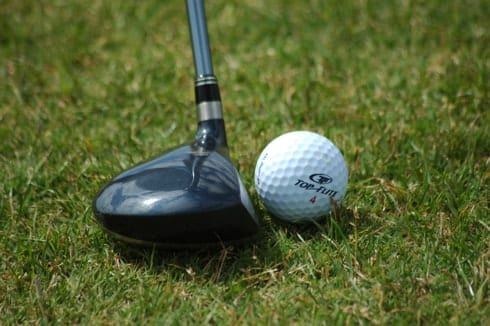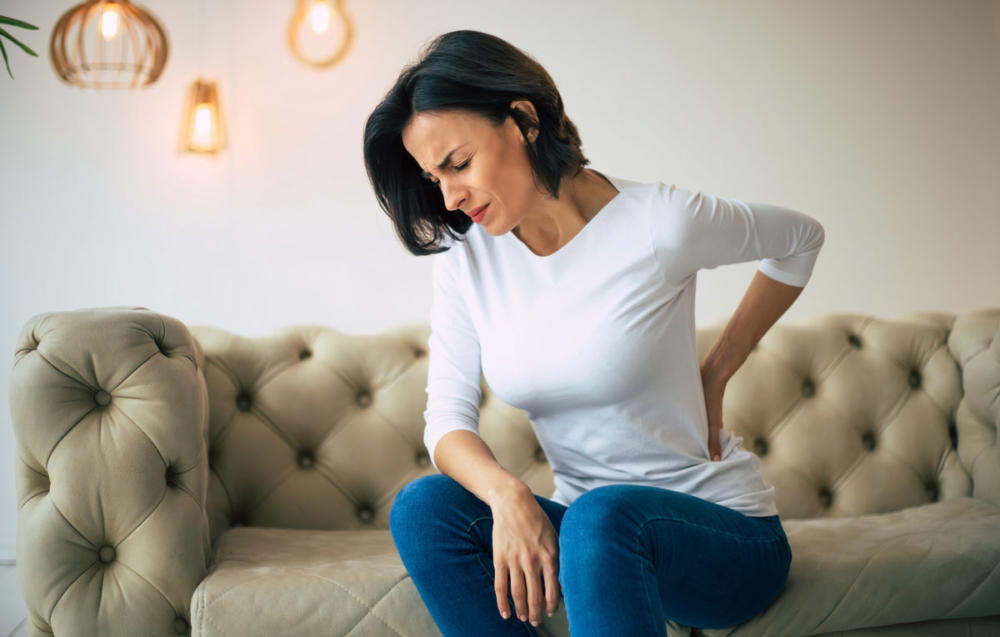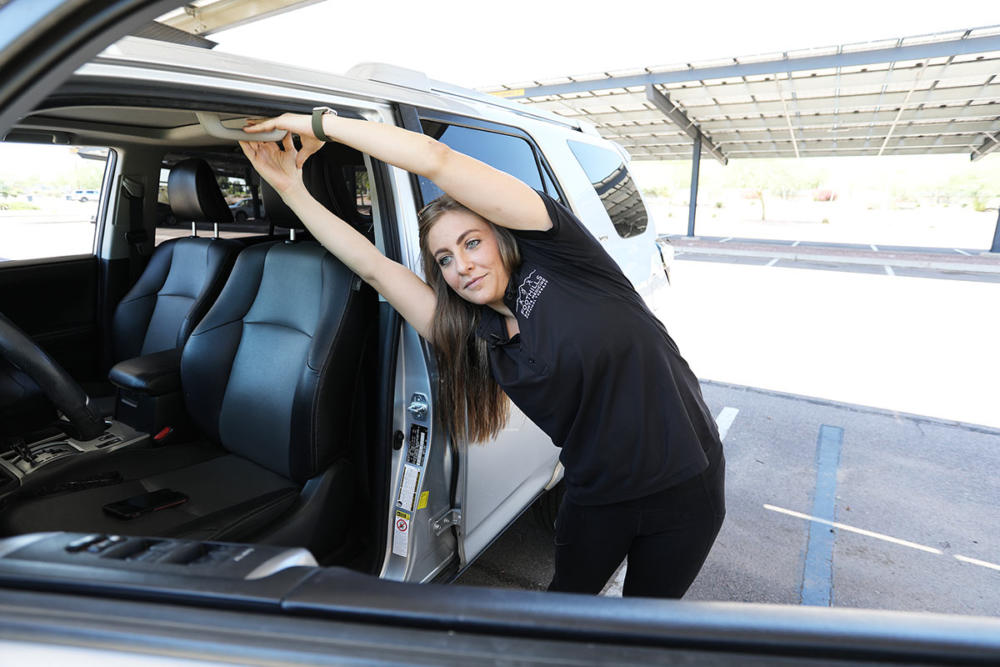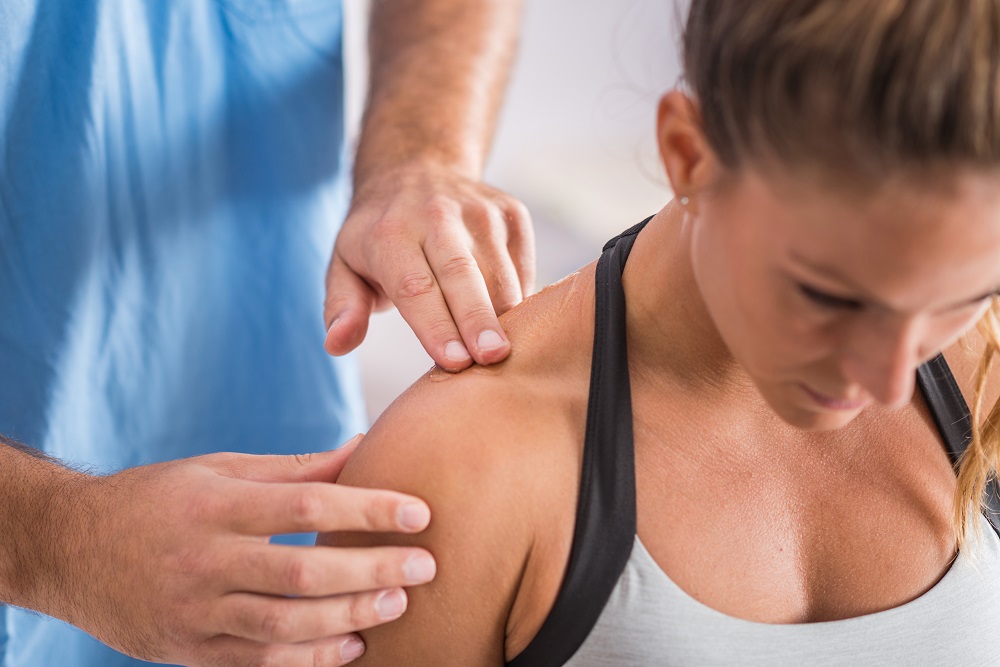Our Gilbert physical therapy expert, Allen Gruver, is here to go in-depth about the link between your lower back pain and golf:
The golf swing is a highly integrated movement requiring tri-planar mobility and strength, especially across the hips and pelvis. There are approximately 23 ranges of motion in the body that are essential for an efficient swing—none more important than the hip joint, known as the acetabular-femoral (AF) joint. Rotation of the pelvis during the golf swing is a key movement, promoting stability and the transfer of power during both phases of a golf swing. When rotation of the hip joint is limited in one joint or both, rotational demands are transferred proximally to the lumbar spine and SI joints. This compensation affects the biomechanics of the swing and leads to mechanical breakdown in the lumbar spine region.
Research has shown a positive correlation between decreased lead hip rotation and lumbar range of motion with a prior history of low back pain in professional golfers. A study performed in 2004 by Dr. James Andrews and various authors showed that range of motion deficits in the lead hip rotation and lumbar spine extension are correlated with a history of low back pain in golfers. It was the author’s hypothesis that capsular tightening occurred due to lead hip external rotator hyper tonicity and inhibition of the corresponding internal rotators.3
Ron Hruska, MPT, PT of the Postural Restoration InstituteTM (PRI) in Lincoln, Nebraska describes a pattern of asymmetry across the lower extremity known as the Anterior Interior Chain (AIC). Hruska believes that the asymmetrical postural pattern occurs in some degree with all humans and the specific muscular imbalances occur on the left side. This is attributed to anatomical differences and a dominant right side motor pattern that we develop through our life. The left Anterior Interior muscle chain consists of the diaphragm, psoas major, tensor fascia latae, vastus lateralis, and the biceps femoris. When this muscle chain becomes unopposed and malpositioned a predictable pattern evolves, causing structural compensations throughout the entire body.2
The left anterior interior chain primarily affects the pelvic girdle and its corresponding joints. The left pelvic innominate is anteriorly tilted and forwardly rotated in relationship to the right innominate. The left femur is internally oriented within the acetabular-femoral joint (AF), promoting compensatory femoral-acetabular (FA) external rotation to reposition the left femur in a relative neutral state. This pelvic positional state produces hypertonicity of the left external rotators and posterior capsule tightening.
During a golf downswing, AF internal rotation is key for transfer of energy and acceleration through the impact of the golf ball. As weight is being transferred to the lead hip, the pelvis rotates over the femur producing AF internal rotation. This generation of torque is created in the lower body and transferred up through the body and through the club. According to Glenn Fleisig of the American Sports Medicine Institute, the majority of torque in a swing is generated by the lower body muscle groups of the glutes, hamstrings, quads, and core region (low back, abdominal, obliques).1
When a golfer presents with a Left AIC pattern and hip external rotatory hypertonicity and/or posterior capsular restriction is accompanied, the internal rotators of the hip and concomitant obliques are weakly positioned and cannot properly achieve adequate internal rotation during the downswing phase. The inability to rotate the acetabulum over the femur creates compensatory shearing forces in the SI joints and lumbar spine, where anatomical rotation is very minimal and undesirable. This rotational compensation will eventually lead to torque of SIJ and lumbar spine causing SIJ dysfunction/instability and mechanical low back pain.
Allen, and all of our physical therapy experts at Foothills Sports Medicine Physical Therapy have extensive knowledge about injuries and physical rehabilitation. If you have questions about your lower back pain or another golf-related injury, make an appointment today for a physical therapy consultation!
To learn more about Gilbert physical therapy at Foothills Sports Medicine Physical Therapy and what our certified physical therapists can do for you, check out the Foothills blog.
References:
- Fleisig, Glenn MS: “The Biomechanics of Golf”
- Hruska, RJ. Myokinematic Restoration-An Integrated Approach to Treatment of Lower Half Musculoskeletal Dysfunction. Postural Restoration Institute Course Manual. 2008.
- Vad, V., Atul B., Basrai, D., Gebeh, A., Aspergren, D., Andrews, J. Low Back Pain in Professional Golfers. The Role of Associated Hip and Low Back Range of Motion Deficits. The American Journal of Sports Medicine 32: 494-497 (2004)




